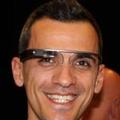Cited By
View all- Cotti LGuizzardi DBarricelli BFogli D(2024)Enabling End-User Development in Smart Homes: A Machine Learning-Powered Digital Twin for Energy Efficient ManagementFuture Internet10.3390/fi1606020816:6(208)Online publication date: 14-Jun-2024
- Gallo SMattioli APaterno FBarricelli BFogli DGuizzardi D(2024)An Architecture for Green Smart Homes Controlled by End UsersProceedings of the 2024 International Conference on Advanced Visual Interfaces10.1145/3656650.3656710(1-3)Online publication date: 3-Jun-2024
- Andrao MMorra DPaccosi TMatera MTreccani BZancanaro M(2024)"This Sounds Unclear": Evaluating ChatGPT capability in translating end-user prompts into ready-to-deploy Python Code.Proceedings of the 2024 International Conference on Advanced Visual Interfaces10.1145/3656650.3656693(1-4)Online publication date: 3-Jun-2024
- Show More Cited By




